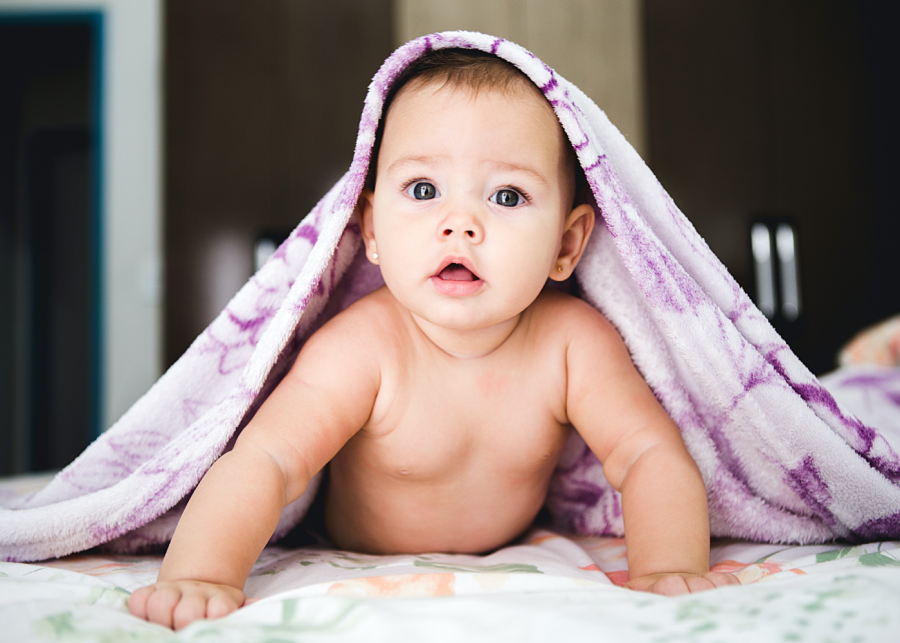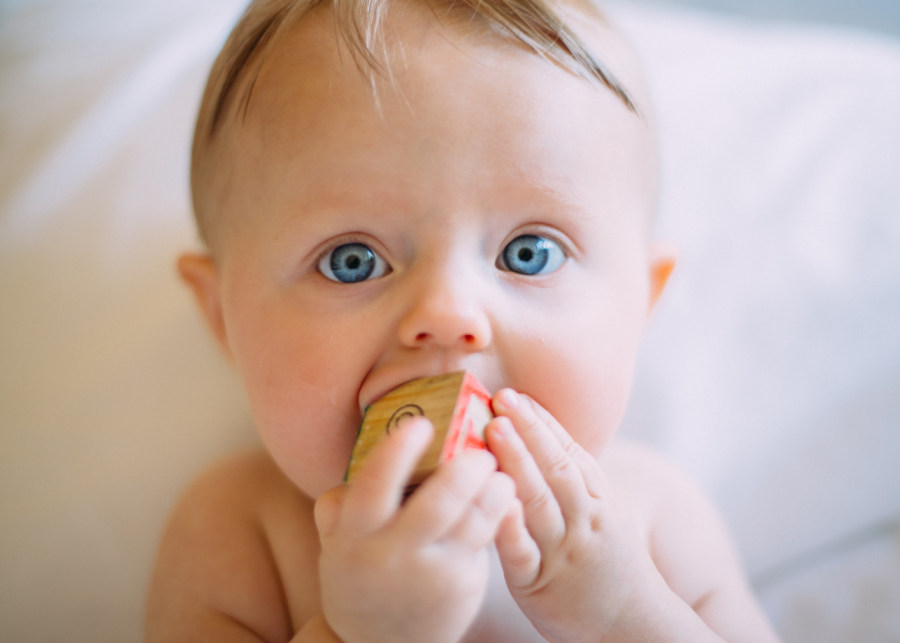
Although eczema in babies is not life-threatening, it still leaves us parents feeling uneasy. Here's some helpful advice and more info about the triggers and treatments available in Singapore...
Eczema in babies and children is very common. You’re probably familiar with your kid’s scratching and red, irritated skin, and it can be difficult to deal with if it’s a flare-up. But know you’re not alone in this parenting woe. A study in 2015 led by the National University of Singapore found that 20% of children have eczema. And we can thank the sweltering heat and humidity in Singapore for the high number of cases. We spoke to physician and featured expert at All Things Health Malaysia, Luke Yau Wai, to get the lowdown on all you need to know about that pesky and painful skin condition…
How can you tell eczema in babies from, say, a diaper rash or baby acne?
Eczema refers to a group of skin conditions that cause symptoms like itching, redness, dryness, and inflammation. While it can also be mistaken for a rash or other skin disorders, it’s important to note that eczema often comes and goes. Below are some of the different symptoms and causes of eczema in babies or children, as well as ways to improve the pain and discomfort associated with each type.
Can eczema in babies go away on its own?
The simple answer would be yes. Most babies outgrow the condition as symptoms become less severe after each flare-up. However, eczema, in general, is a chronic condition with no cure. Hence, parents need to ensure they manage symptoms properly with the right treatment.

Common types of eczema in babies
The itchiness resulting from eczema can be insufferable for little ones. It can present with various types of skin lesions caused by multiple external and internal factors. Eczema flares up every now and then, depending on its trigger. Characteristically, infant eczema has overlapping and alternating acute and chronic phases.
According to the symptoms, there are three most common types of eczema in babies:
1. Atopic dermatitis
Caused by an allergic reaction, atopic dermatitis manifests as red rashes, scaly skin, open sores, and itchiness. The symptoms are usually around the face, elbows, or knees.
What’s the treatment for babies with atopic dermatitis? Treatments may involve ointments or gel moisturisers, acupuncture, herbal baths, and phototherapy for severe cases.
2. Nummular eczema
The cause of nummular eczema is not known. However, exceptionally dry skin and wounds can trigger this condition. This type of eczema results in coin-shaped lesions on the torso and limbs, itching or burning sensation on the skin, lesions that are crusted or oozing liquid, and scaly and inflamed skin that appears brown, red, or blushed.
What’s the treatment for babies with nummular eczema? Physician Luke advises parents to apply an astringent compress to clear up infections.
3. Seborrheic dermatitis
Often mistaken as dandruff, this chronic condition links to the large number of oil-producing glands present in certain areas of the body, including the nose, scalp, and upper back. Another term for seborrheic dermatitis is “cradle cap”, with scaly, greasy patches all over the scalp, which can also develop on your baby’s bottom.
What’s the treatment for babies with seborrheic dermatitis? Implementing a hydrating baby skincare routine, using emollients like petroleum jelly to reduce scaling skin, and washing the skin with zing-based cleaner are recommended for mild-severe cases. If the condition persists, a dermatologist may prescribe the intermittent use of immunosuppressant medicines or topical corticosteroids.
And what about Traditional Chinese Medicine (TCM) when it comes to eczema?

In TCM, the occurrence of eczema in babies or children can be traced back to the mother’s diet, mood, and hormonal changes during pregnancy. “These can lead to internal liver heat and heaty pathogens that pass to the child in the mother’s womb,” explains physician Luke.
According to TCM, three conditions contribute to eczema, each requiring a specific treatment protocol:
• Wind-heat: Treatment for eczema due to wind-heat will prioritise clearing heat and dispelling wind. You can use weeping forsythia (Lianqiao, 連翹) and Dictamni cortex (Bai xian pi, 白鮮皮).
• Damp-heat: You can address this condition by using herbs like Radix scutellariae (Huang qin, 黃芩) and Amur cork tree bark, (Huang bai, 黃柏) to clear Heat and eliminate Dampness.
• Weak Spleen: Herbs like Radix pseudostellariae (Tai zi shen, 太子參) and white atractylodes rhizome (Bai zhu, 白术) can invigorate qi (vital energy) and strengthen the Spleen.
Parents can also feed their babies with Si shen soup that has a milder taste and Bu qi jian zhong pills to improve their baby’s digestive health and support eczema treatment. Every morning and afternoon, bathe your baby with a herbal mixture to clear heat and relieve eczema symptoms.
What else can parents do at home?
When at home, you can reduce eczema triggers by wiping off milk stains immediately, not using detergents to wash your baby clothes, and applying gentle moisturisers to your baby’s skin daily.
Whatever approach you take, remember to always consult your doctor or certified TCM physician for advice before starting treatment.
Good luck, parents!
Article contribution from All Things Health Malaysia and lead image Jonathan Borba via Unsplash.
